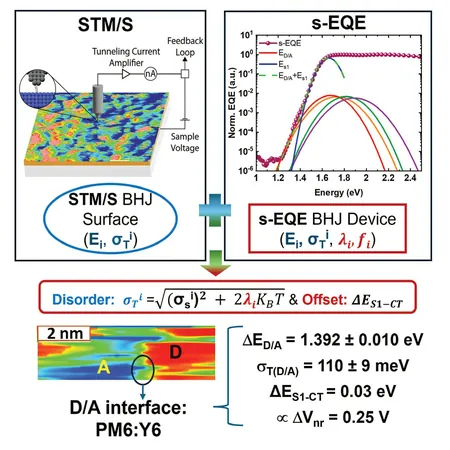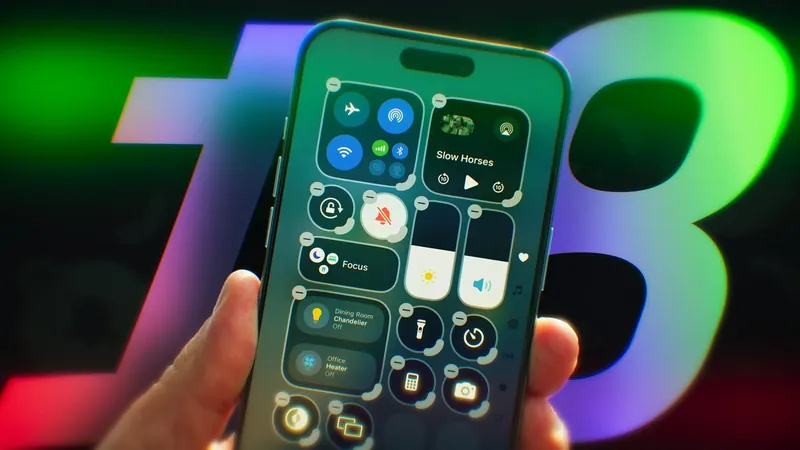
New Breakthrough in Organic Solar Cells: How Addressing Interface Issues Could Skyrocket Efficiency!
2024-10-30
Author: Siti
Introduction
Exciting developments from North Carolina State University could revolutionize the future of organic solar cells. Researchers have unveiled a cutting-edge method for visualizing the critical interfaces where sunlight is converted into electrical energy. This groundbreaking work not only sheds light on the reasons behind energy loss in these cells but also lays down a series of design principles focused on enhancing their efficiency.
Research Details
Published in the journal Matter, this research zeroes in on organic solar cells, which are composed solely of carbon-based polymer materials. These innovative cells present numerous advantages, including the potential for lower production costs, utilization of abundant materials, and versatile applications such as semi-transparent windows. Additionally, their thin-film nature allows for lightweight and flexible installations, lending themselves well to roll-to-roll manufacturing, which greatly simplifies transport and installation processes.
Current Challenges
However, a persistent roadblock remains: organic solar cells lag behind their silicon and perovskite counterparts in efficiency when it comes to converting sunlight into electricity. “Organic solar cells comprise two different materials,” explains Aram Amassian, one of the co-authors and a materials science and engineering professor at the university. “While one polymer material harnesses electrons from sunlight, it must efficiently transfer these electrons to a second material, typically a smaller molecule known as an acceptor.”
Previous Findings
Previous research indicated that the interfaces formed between these donor and acceptor materials were pivotal in causing voltage loss, limiting the overall efficiency of organic solar cells. The aim of the current study was to dig deeper into the nature of these interfaces and understand how they contribute to energy loss.
Novel Techniques Used
The team employed a novel scanning-probe microscopy technique that allowed them to map not only the surface characteristics of the donor-acceptor blend but also the energy properties at their interfaces. This included analyzing the energy gradient and the molecular disorder present in these crucial areas. “Our findings highlight how the disorder of molecules at the interface impacts energy performance,” said co-author Daniel Dougherty, a professor of physics at NC State.
Key Discoveries
One of the major hurdles the researchers faced was identifying which specific interfaces contributed most significantly to voltage loss. Given that donor-acceptor blends can lead to multiple types of interfaces, pinpointing the exact culprit was challenging. However, their study identified the sharp donor-acceptor interface found in high-performance organic solar cells, such as the PM6:Y6 blend, as the key area to target to mitigate voltage losses.
Addressing a Debate
Delving further into their discoveries, the researchers addressed a long-standing debate within the organic solar cell community: Was the energy loss primarily due to differences in energy levels between donor and acceptor materials, or was it due to energetic disorder at the interfaces? The team’s experiments revealed that both factors play a role, affirming perspectives from both sides of the debate.
Future Implications
The researchers demonstrated the feasibility of "fixing" energy differentials while optimizing disorder at interfaces by adjusting the blending processes during fabrication. This crucial finding paves the way for potential engineering solutions aimed at minimizing voltage loss in organic solar cells.
Conclusion
As the push for renewable energy technology accelerates, these findings could usher in a new era for organic solar cells—promising to enhance their efficiency significantly and make them a more competitive option in the burgeoning solar market. With advancements like these, the dream of widespread, affordable renewable energy could be closer than ever. Stay tuned for more updates on this remarkable journey toward maximizing solar technology!




 Brasil (PT)
Brasil (PT)
 Canada (EN)
Canada (EN)
 Chile (ES)
Chile (ES)
 Česko (CS)
Česko (CS)
 대한민국 (KO)
대한민국 (KO)
 España (ES)
España (ES)
 France (FR)
France (FR)
 Hong Kong (EN)
Hong Kong (EN)
 Italia (IT)
Italia (IT)
 日本 (JA)
日本 (JA)
 Magyarország (HU)
Magyarország (HU)
 Norge (NO)
Norge (NO)
 Polska (PL)
Polska (PL)
 Schweiz (DE)
Schweiz (DE)
 Singapore (EN)
Singapore (EN)
 Sverige (SV)
Sverige (SV)
 Suomi (FI)
Suomi (FI)
 Türkiye (TR)
Türkiye (TR)
 الإمارات العربية المتحدة (AR)
الإمارات العربية المتحدة (AR)